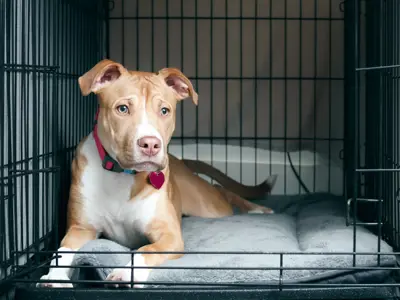Crate training: Provides your dog with her own personal space. It is also used to train the dog to be calm and keep her safe when you are not there.
House training: All eliminating is done outside or in a specified area.
Manners training: The dog will wait for you, doesn’t jump up, walks nicely along side of you, and chews on his own things and not yours.
Good citizenship training: Tests dogs in simulated everyday situations to be good citizens including: accepting a friendly stranger, patiently sitting for petting, walking through a crowd and dealing with distractions.
Command training: An extension of manners training or sometimes for competition. Dog learns the commands heel, sit, down, stay, come, etc.
Conformation training: This type of training is done for dogs that will be shown (beauty pageant of the dog world).
Agility training: The dog learns gymnastics for dogs such as: jumps, teeter totter, tire jump, A-frame, tunnel, weave poles, etc.
Behavioural problem solving: Done to address a specific issue such as separation anxiety, fear, hyperactivity, which often includes some of the types of training mentioned above.
Specialized training: Herding, tracking, field trials, search and rescue, guide dog, disability service, hunting, protection, etc.

















